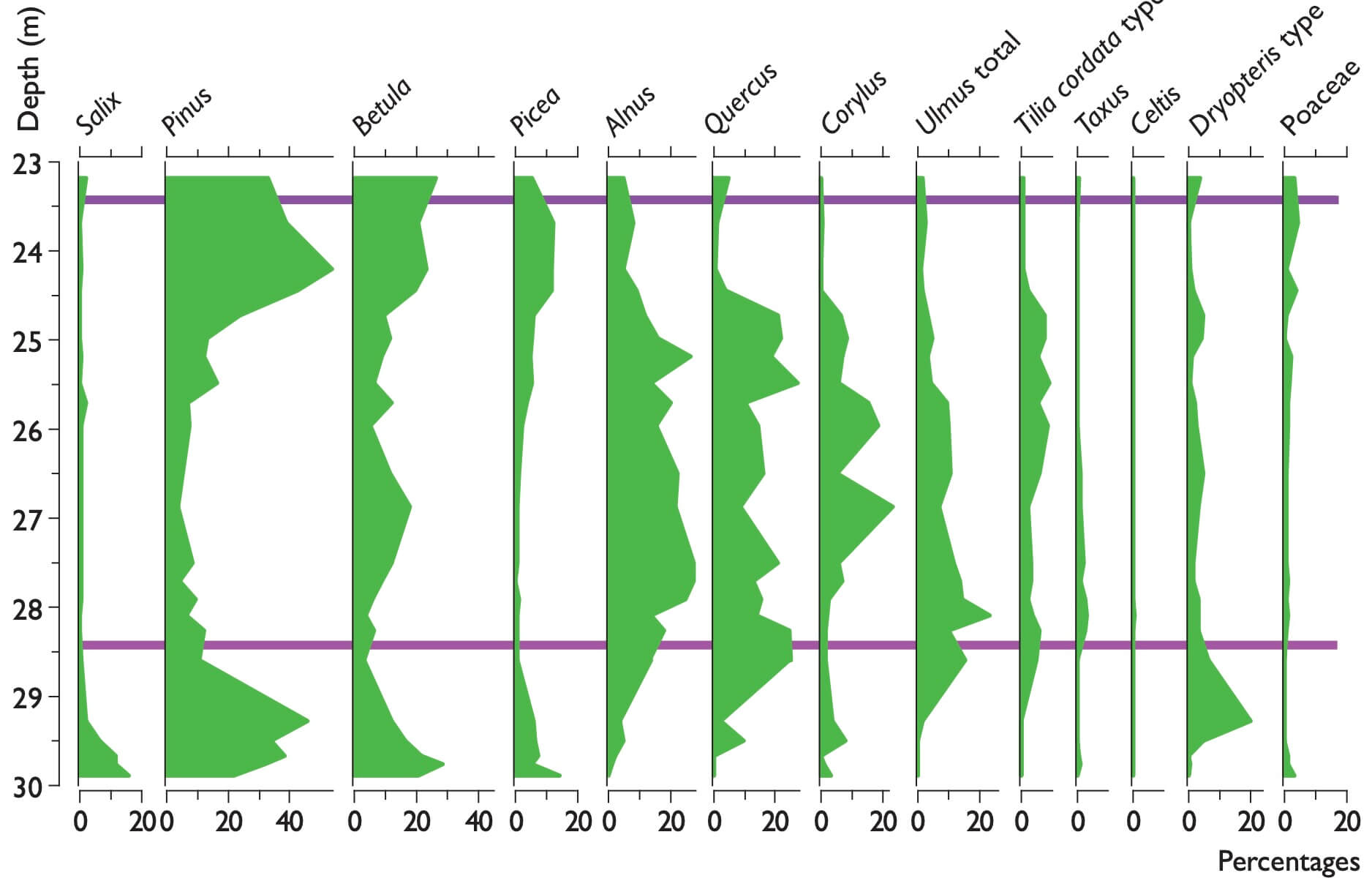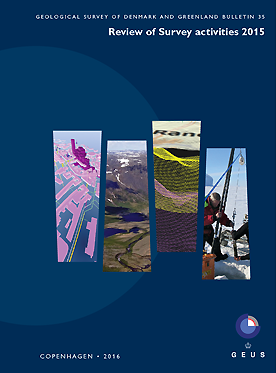
How to Cite
Share
Abstract
Marine interglacial deposits are fairly common and widespread in Denmark, but so far none have been reported from the Herning area in central Jylland. In 2014, the Geological Survey of Denmark and Greenland (GEUS) received samples at one metre intervals from a borehole at 55°59.3´N, 8°56.6´E (elevation 27.56 m above sea level), at Hesselvigvej 7 near Kibæk in central Jylland (Fig. 1). The succession consisted of Miocene and Quaternary deposits. The Quaternary part was dominated by glaciofluvial sand and a single till bed, but it also contained a marine clay unit (16–21 m depth, 6.5–11.5 m a.s.l.). This marine clay contained spines of the sea-urchin Echinocardium cordatum, a boreal species known from Eemian and Holocene deposits from Denmark, but unknown from interstadial deposits. A lacustrine unit between 26 and 33 m depth (5.5 m b.s.l. to 1.5 m a.s.l.) consisted of clay, calcareous-rich gyttja and diatomite. Because Quaternary marine deposits are unexpected in this part of Denmark, we report here on analyses of pollen from the lacustrine unit and foraminifera from the marine unit, and we compare these with some interglacial records from Jylland.
How to Cite
Share
Copyright (c) 2016 Bent V Odgaard, Karen L Knudsen, Ole Bennike, Henrik J Granat

This work is licensed under a Creative Commons Attribution 4.0 International License.
Downloads
Editors Adam A. Garde, Ole Bennike, Kristine Thrane and W. Stuart Watt
This issue of Review of Survey Activities presents a selection of 24 papers reflecting the wide spectrum of current activities of the Geological Survey of Denmark and Greenland, from the microscopic to the plate-tectonic level.
The Survey’s activities in Denmark are illustrated [...]









